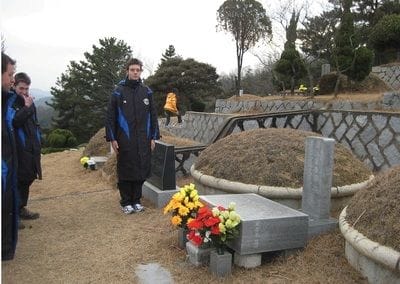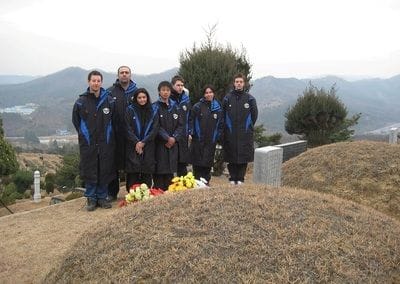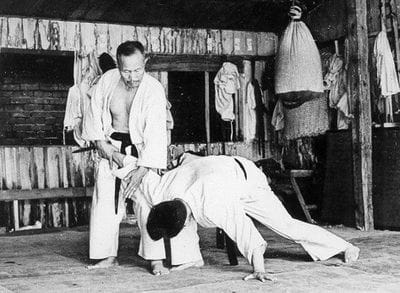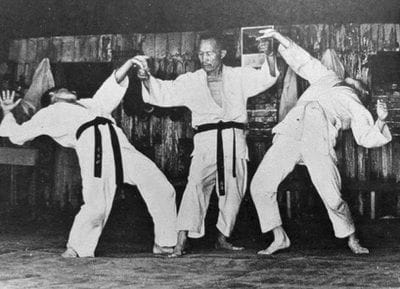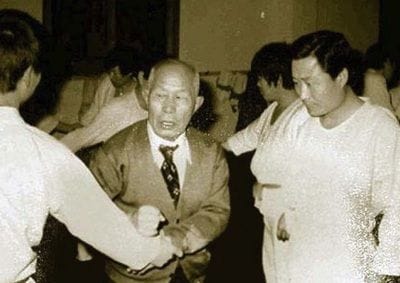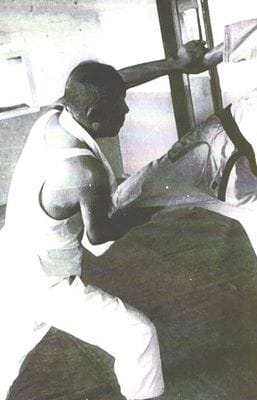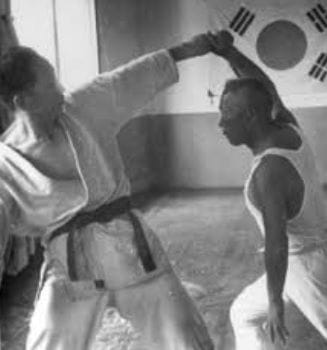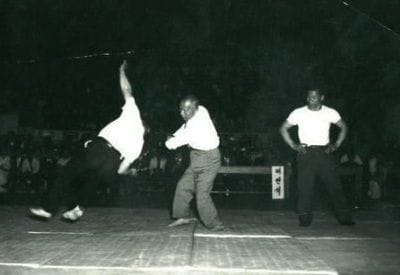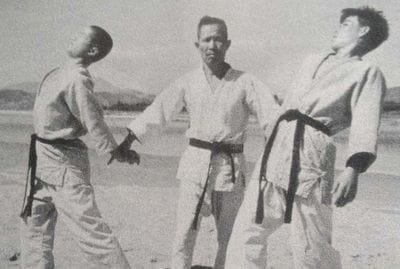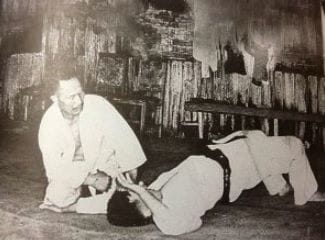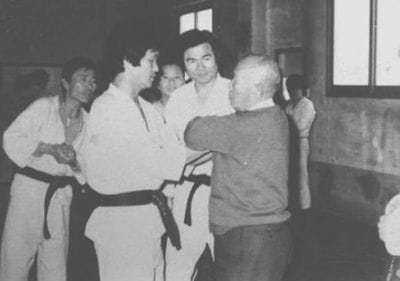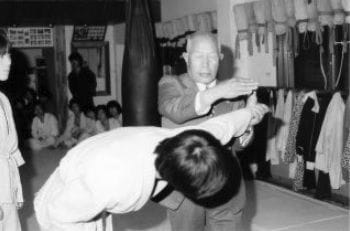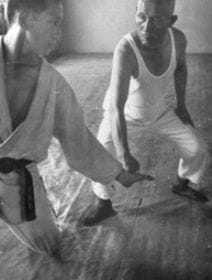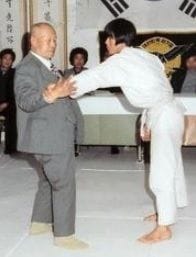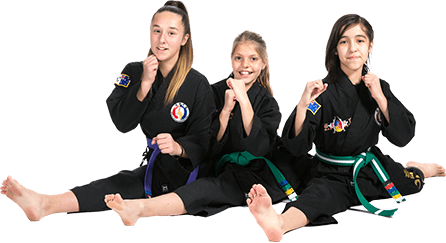Happy Birthday to Hapkido Founder Choi Yong SulWritten on the 23 October 2024 )
Happy Birthday to Hapkido Founder Choi Yong Sul born on 9th November 1904. During the late 1800's to 1945, Korea was involved in conflict with China and Japan. During this period, many Koreans learned extensively about martial arts being practiced in these countries. In 1910, Japan annexed Korea, abolished the Korean monarchy and outlawed all Korean martial arts. During this time, many Koreans studied Japanese Jujitsu, Karate, Judo, Kendo as well as Chinese Kung Fu while continuing to practice native Korean martial arts in secret. Korean monasteries in the mountains played an important role in preserving many of the native arts. Pictured are GIANT Instructors Giorgio & Anthony with their students visiting South Korean temples in 2008.
Post World War II, when Korea was free of Japanese dictatorship, many Koreans who had learnt Japanese and Chinese martial arts went on to study a book called the the Muye Dobo Tongji to rediscover their heritage and recreate the link to Korean martial arts. Below is a video that depicts the illustrated transcripts from this book which was commissioned in 1790 by King Jeong Jo of the Joseon Dynasty. Known as the father of Hapkido, Choi, Yong Sul was taken to Japan around 1912 as a child labourer. He was arranged to be cared for in a Buddhist temple in Kyoto under the care of a monk Kintaro Wadanabi. Kintaro was a good friend of a Grandmaster Sokaku Takeda who was the head of a Japanese Jujitsu (soft art) called Daito-Ryu Aiki-Jujitsu (great eastern school, art of softness). It is the oldest of all Jujitsu systems in Japan. Takeda described this art as: "the perfect self defence art where you avoid being cut, hit or kicked while at the same time you don't hit, kick or cut. As the attack comes you handle it expediently using the power of your opponent, so even women and children can practice these techniques" (Tokyo Asahi Newspaper, 1930). Sokaku Takeda although a small man, about 4'11 was quite feared by his students and his reputation even influenced US President Theodore Roosevelt. Sadly, as Japan lost the war, Takeda committed suicide. It is believed that the roots of Daito-Ryu were originally transmitted to Japan by Buddhist Korean Monks of the Paekche kingdom. The Monks had fled Korea to escape the advancing Silla kingdom during the sixth century and set up colonies in Japan, spreading Buddhism as well as their martial arts. These roots were then reinterpreted to suit Japanese culture by Prince Teijin of the imperial palace in the eight century. Around the year 1080 Samurai Minamoto Yoshimitsu began the scrolls of Daito-Ryu. Modern Japanese arts such as Judo, Kenpo, Iaido and Aikido have their roots in Daito-Ryu Aiki-Jujitsu. Morihei Ueshiba (founder of Aikido) was a direct student of Takeda for 5 years.
Choi, Yong Sul displayed a fascination for the murals of battles and paintings of famous martial arts scenes displayed throughout Kintaro's temple. It was obvious what direction he wanted his life to take. Therefore Kintaro arranged for Grandmaster Takeda to adopt Yong around the age of 11. He was given a Japanese name Asao Yoshida and trained under Takeda for the next thirty years until Takeda's death in 1943.
At the time of Takeda's death in 1943, Dojunim Choi made a sacred trust with his master that he would continue to teach the purest form of Daito Ryu which he had learnt from Takeda. The basic techniques of Daito-Ryu Aiki-Jujitsu are in the form of large circles as seen in the Daito-Ryu and its derivative Aikido in Japan today. As the practitioner gets better after years of training the circles get smaller and the effect on the person you are working on becomes greater with less motion. The motions become so small that when performed it is very hard to notice what had just happened. This higher connection of understanding can only be developed with years or even decades of practice which is what Dojunim Choi took back with him to Korea. You can feel the difference in smaller circle motions from an experienced Hapkidoist vs a beginner as the joint locks and chokes feel much tighter and painful. Large circle technique seen in Hapkido can only be the result of a teacher with not enough experience or seen in demonstration as larger circles give a flamboyant impression of the art to the general public. A gentleman by the name of Suh, Buk Sub first noticed Choi at his father's brewery. Suh witnessed a fight breaking out and watched Choi defend himself against a group of men with little effort (bear in mind that Choi, Yong Sul was in his early 40's at this event). He immediately wanted to learn from Choi and became his first student, the very next day they had their first lesson on Sunday, February 22nd 1948. Suh was in his early 20's and was already a black belt in Judo. Suh came from a wealthy and politically active family, they initially employed Choi as their bodyguard and later in 1951 assisted Choi in opening his first dojang. Dojunim Choi, Yong Sul died in 1986 at age 81. His unique contribution to Martial Arts has impacted globally resulting in thousands of practitioners visiting his grave in Daegu every year. A father of four, dedicated to family values and a passion for teaching martial arts, his legacy will live forever. Choi, Yong-Sul visited America in 1982 to attempt a unity of Hapkido in the USA. The video below is a short 1982 tribute with the only known footage of the Founder, he is training with Grandmaster Lim, Hyun Soo of the Jung Ki Kwan, who was his longest serving student of 19 years, the footage is quite old however you can just make out some of the techniques they are practicing. In the interview, he speaks of disappointment to see a lack of loyalty in the Hapkido community in the USA as many black belts would leave their masters and start their own schools prematurely. Pictured below is GIANT instructors Anthony & Giorgio Repice together with students paying tribute at the grave site of Choi Yong Sul in 2009, followed by and many more pictures of the Dojunim in action.
|


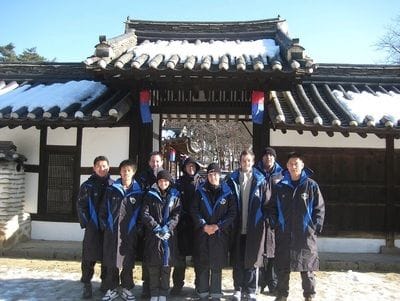
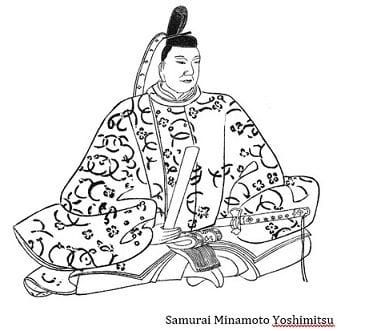
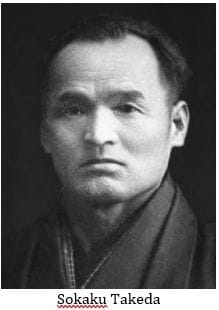
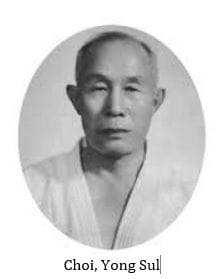
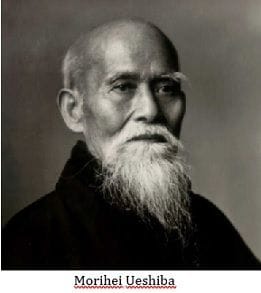
 In 1945, World War II ended and Korea regained its independence. Choi, Yong Sul returned to Korea shortly after the end of the war, settling in Daegu and began teaching his art he called Yu Sul (soft art). Even though he had studied the art of Daito-Ryu Aiki-Jujitsu, he called the art Yusul to make it more compatible to Koreans. Yong shortly changed the name to Yu Kwon Sul (soft fist art) to distinguish it from Judo pronounced "Yudo" in Korean and opened his first dojang called the Hapki Yu Kwon Sul (soft fist art of co-ordinated power) in 1951. Not wanting the name to be too long, Choi, Yong Sul shortened it to Hap Ki Do (way of co-ordinated power) in 1958. One of Choi's leading students, Ji, Han Jae disputes this and claims to have coined the name Hapkido, nevertheless Choi, Yong Sul is credited as the art's Dojunim (founder).
In 1945, World War II ended and Korea regained its independence. Choi, Yong Sul returned to Korea shortly after the end of the war, settling in Daegu and began teaching his art he called Yu Sul (soft art). Even though he had studied the art of Daito-Ryu Aiki-Jujitsu, he called the art Yusul to make it more compatible to Koreans. Yong shortly changed the name to Yu Kwon Sul (soft fist art) to distinguish it from Judo pronounced "Yudo" in Korean and opened his first dojang called the Hapki Yu Kwon Sul (soft fist art of co-ordinated power) in 1951. Not wanting the name to be too long, Choi, Yong Sul shortened it to Hap Ki Do (way of co-ordinated power) in 1958. One of Choi's leading students, Ji, Han Jae disputes this and claims to have coined the name Hapkido, nevertheless Choi, Yong Sul is credited as the art's Dojunim (founder).